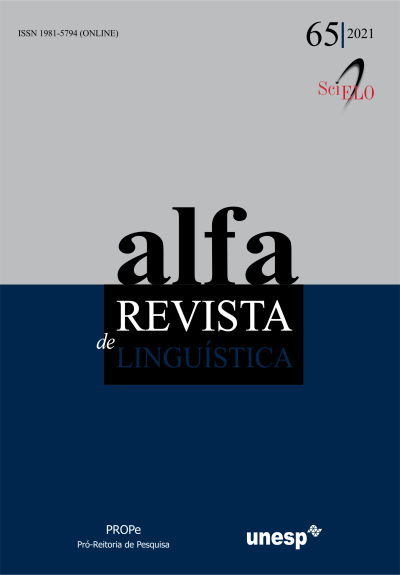Singularidades na sintaxe do português brasileiro escrito na região nordeste nos séculos XIX e XX
DOI:
https://doi.org/10.1590/1981-5794-e12362Palavras-chave:
diacrônica, pronome você, dativos de segunda pessoa, clíticos, nordesteResumo
No campo disciplinar da sintaxe diacrônica, apresento neste artigo um mapeamento diatópico-diacrônico de resultados de diferentes estudos de três fenômenos morfossintáticos do português escrito no Brasil dos séculos XIX e XX: a implementação do pronome você na função de sujeito; a expressão do complemento dativo com referência à segunda pessoa do singular; e a sintaxe de colocação e posição dos pronomes pessoais clíticos em sentenças finitas simples e em predicados complexos. Esse mapeamento diatópico-diacrônico me permite trazer à tona argumentos a favor da hipótese de que, no vasto território brasileiro oitocentista e novecentista, as formas inovadoras da gramática do Português Brasileiro são implementadas com mais expressividade, já na escrita do final do século XIX, primeiro na região Nordeste quando comparada às regiões Sudeste e Sul. Na escrita do século XIX, no Nordeste brasileiro, há reflexos de um sistema já implementado (1) com o pronome você na função de sujeito, (2) com o pronome lhe como forma de complemento dativo com referência à segunda pessoa do singular, com um aumento expressivo das formas preposicionadas (a/para + te/tu/você), e (3) com um sistema de clíticos com poucos casos de interpolação e contração de pronomes e formas inovadoras sem alçamento em complexos verbais e com próclise em posição inicial do período.
Downloads
Downloads
Publicado
Como Citar
Edição
Seção
Licença
Os manuscritos aceitos e publicados são de propriedade da Alfa: Revista de Linguística. É vedada a submissão integral ou parcial do manuscrito a qualquer outro periódico. A responsabilidade do conteúdo dos artigos é exclusiva dos autores. É vedada a tradução para outro idioma sem a autorização escrita do Editor ouvida a Comissão Editorial.

